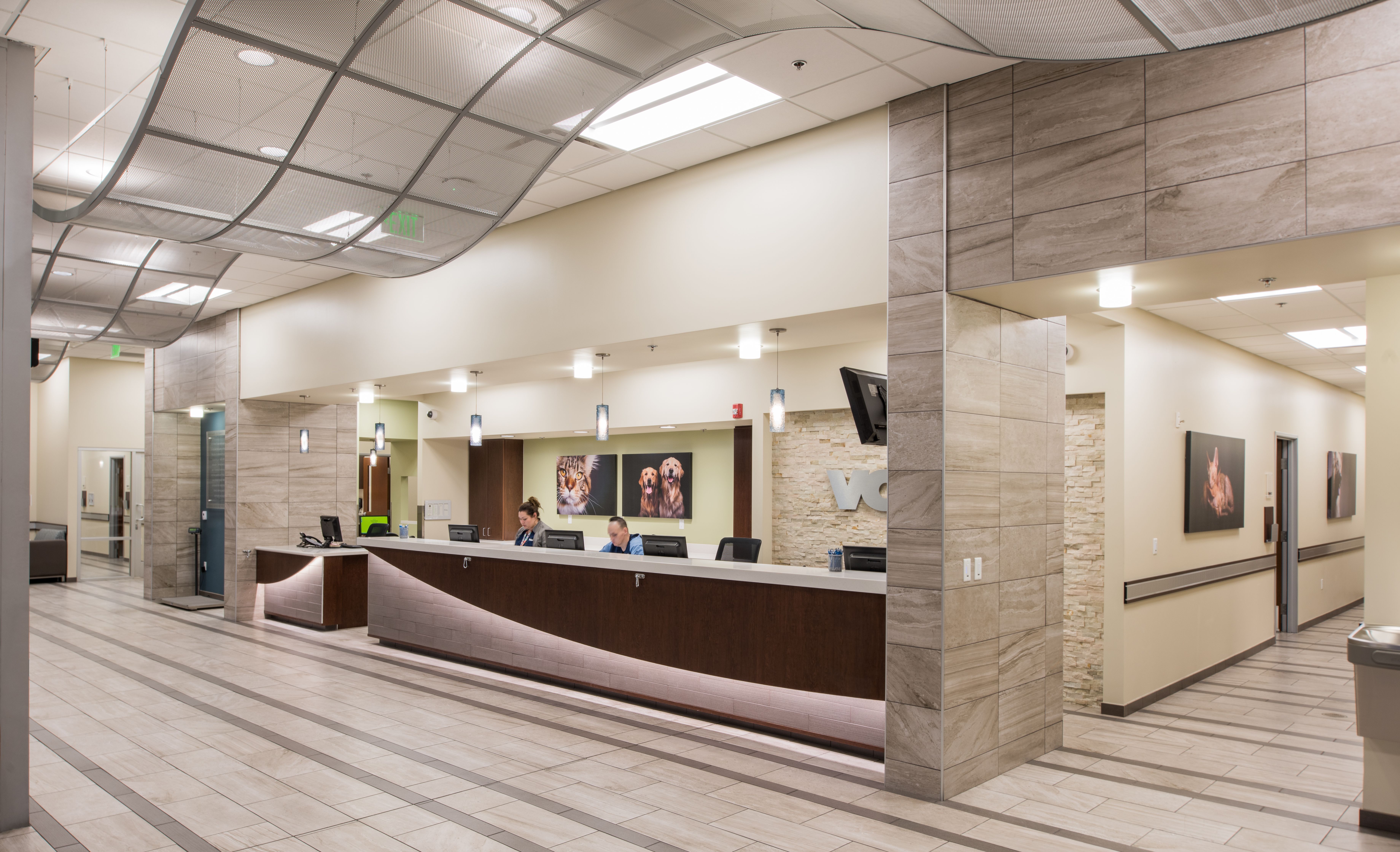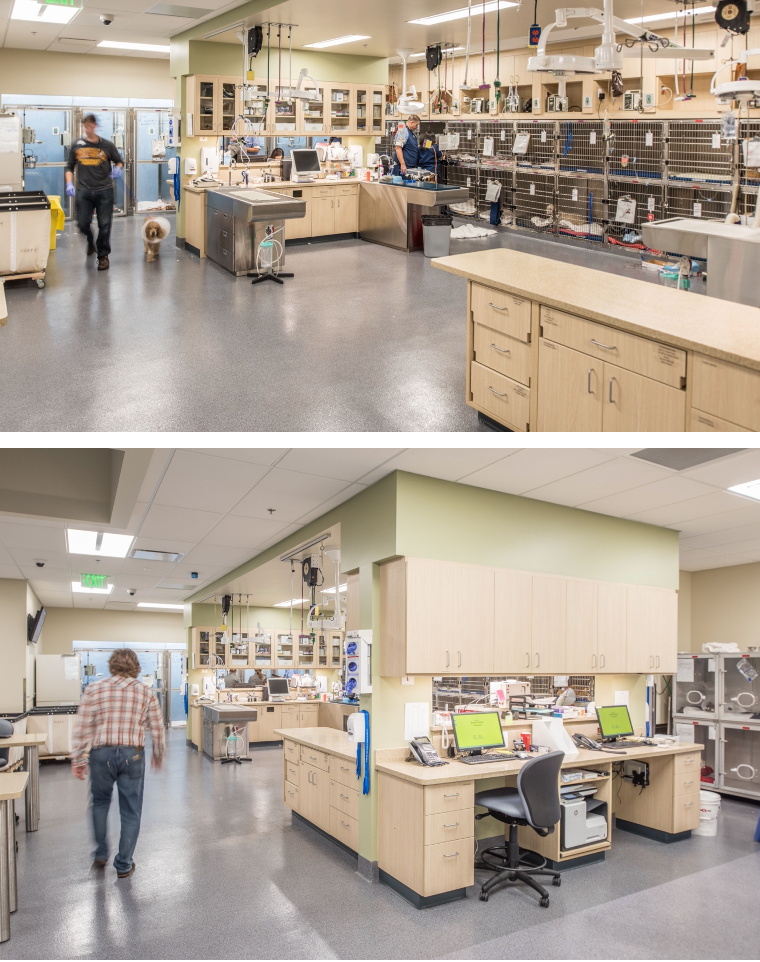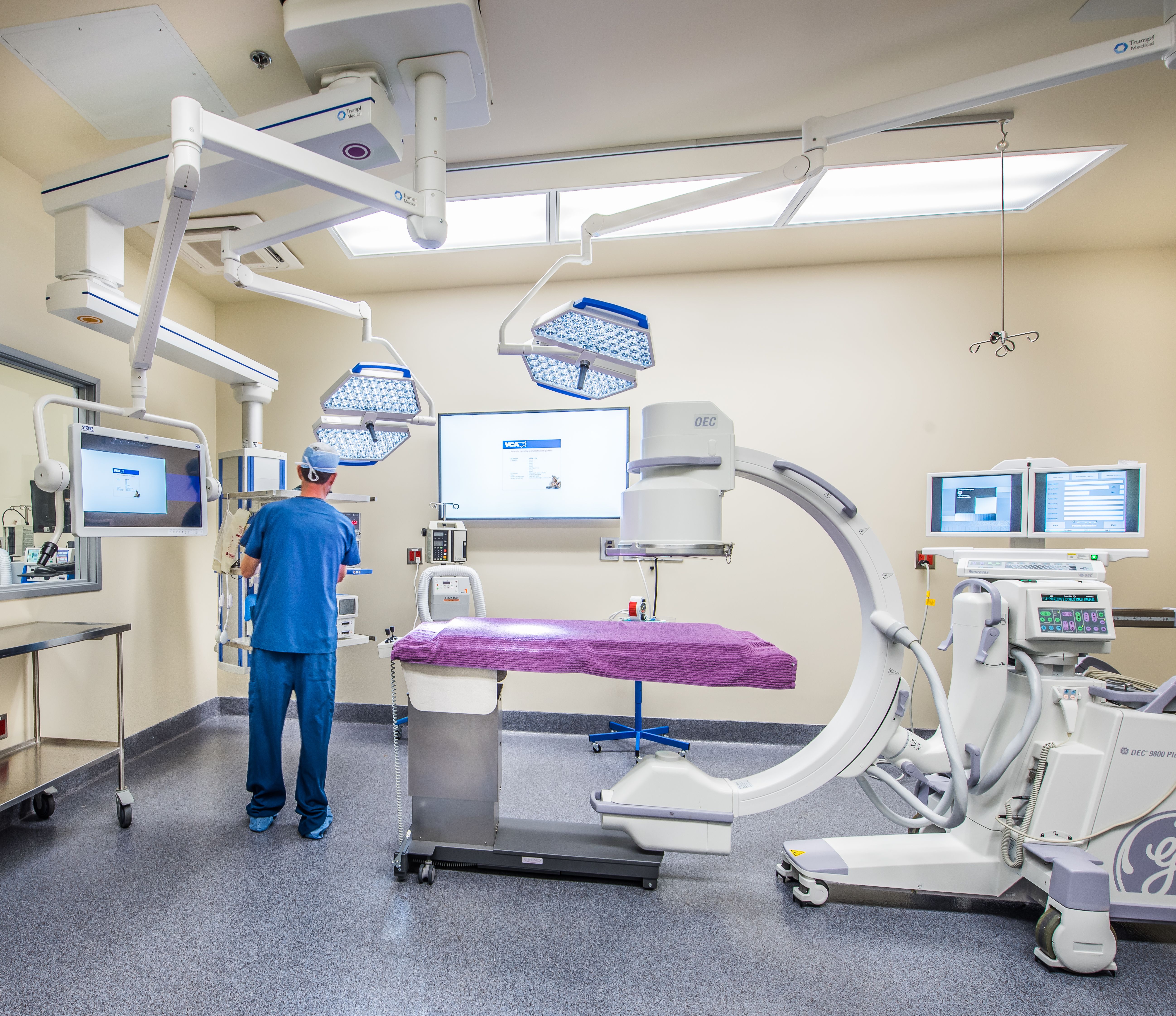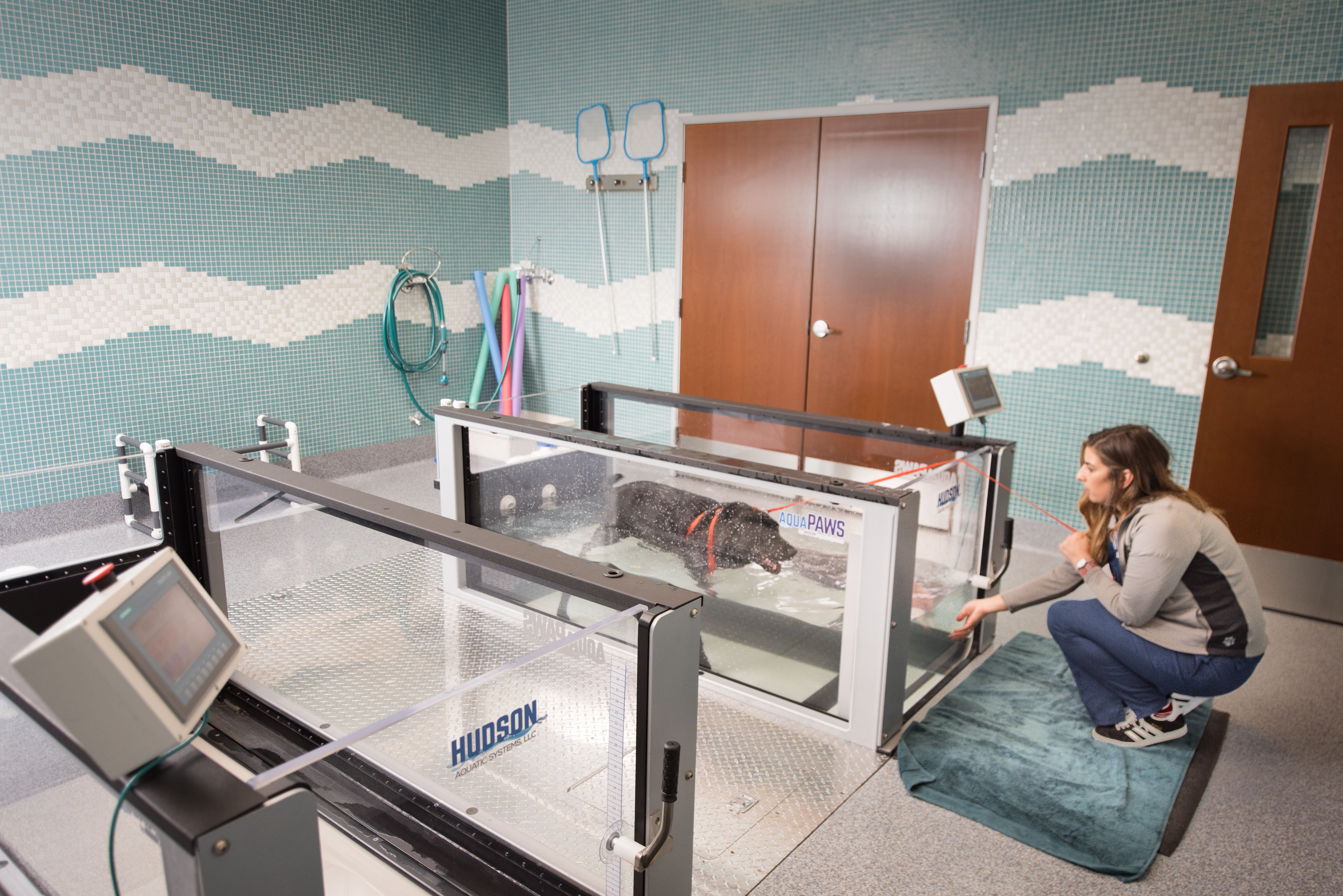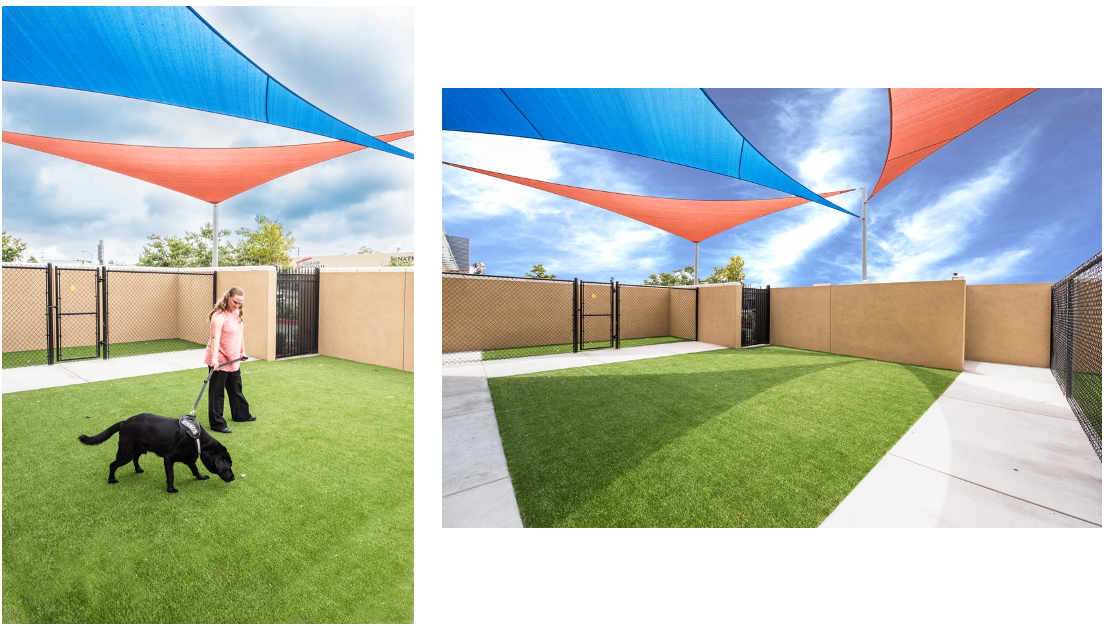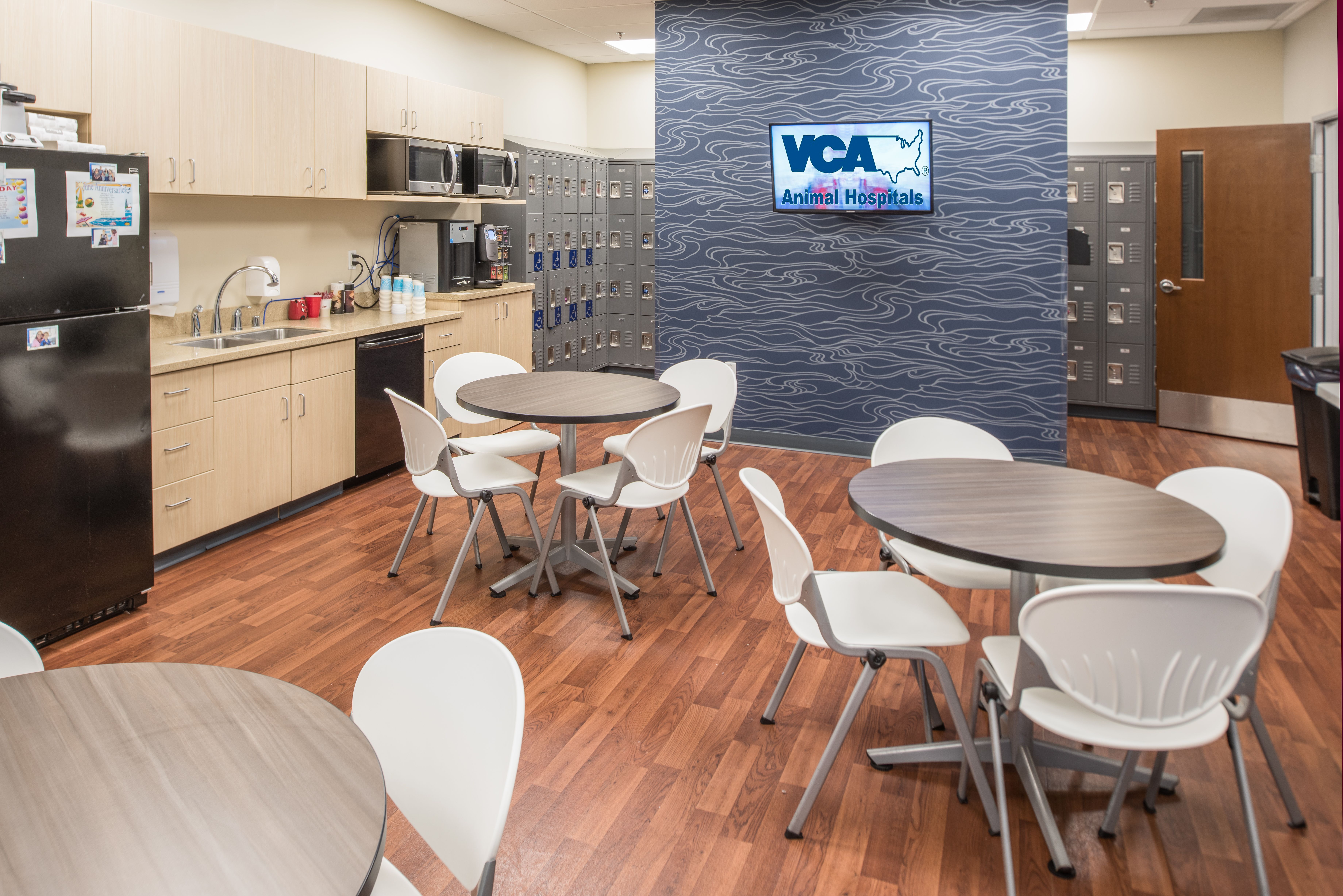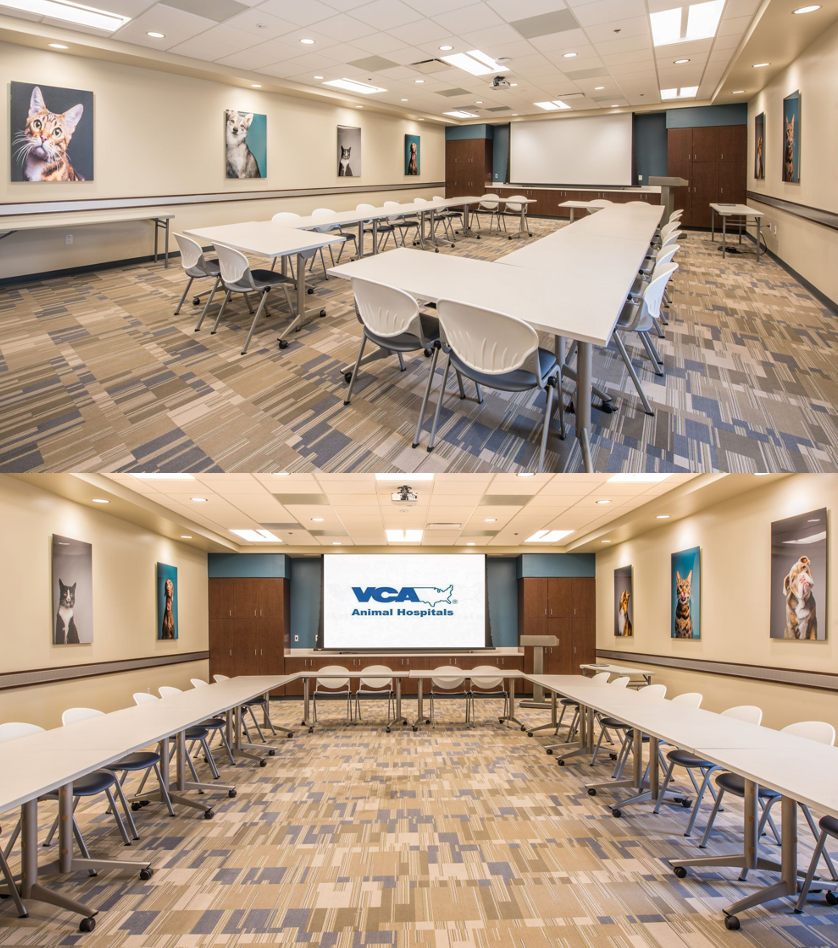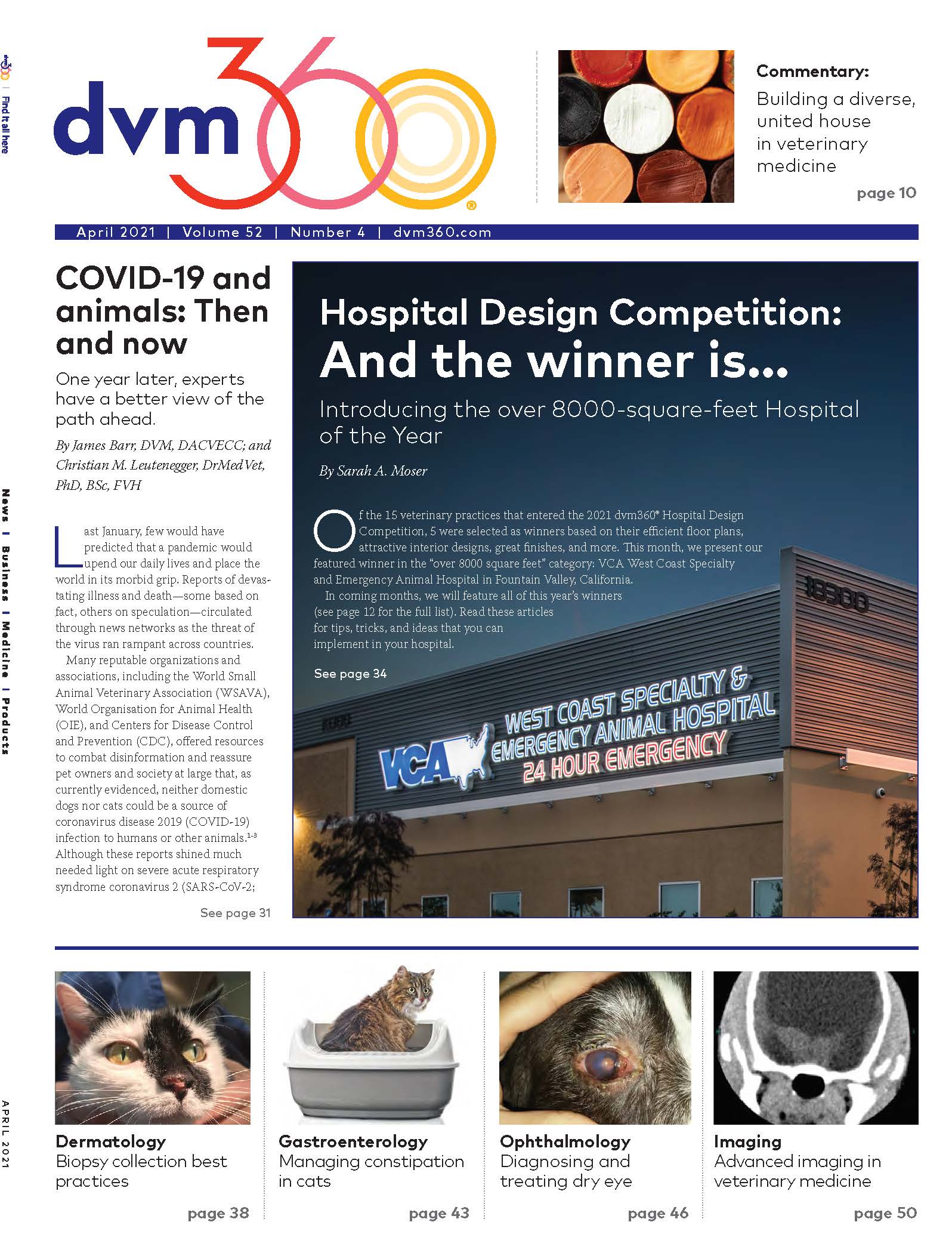Imagine, if you will, working as a veterinarian or technician in a specialty and emergency practice. The practice has been growing steadily for years, and the owner has added on space for the growing specialties little by little, as needed. The catch? Few of the spaces are under the same roof, sending staff members running back and forth from building to building all day. Those additional spaces come in the form of pods in an older business park, forming what the medical director describes as “a rabbit warren, where staff members were jumping from hole to hole all day.” Even then, with 13,000 square feet to its name, the hospital was running out of space in which to expand.
After years of serving their clients in this way, the owner of VCA West Coast Specialty and Emergency Animal Hospital in Fountain Valley, California, made it their mission to consolidate all of the hospital’s services under 1 roof and expand the facility to house even more groups of doctors in a large, freestanding facility that’s all on 1 floor.
The result is a 25,000-square-foot hospital that checks all the boxes for a team of 28 full-time and 4 part-time doctors and their ever-growing support staff. The building originally housed a Staples store, but you’d never know it now by looking at the well-organized floor plan, abundance of natural light, high-tech equipment, and professional yet whimsical decor throughout. This attention to detail earned VCA West Coast Specialty and Emergency Animal Hospital top honors in the 2021 dvm360® Hospital Design Competition for practices larger than 8000 square feet.
Designing for success
By the numbers: VCA West Coast Specialty and Emergency Animal Hospital
Owner: VCA
- Number of doctors: 28 full time, 4 part time
- Structure type: Renovation plus addition
- Exam rooms: 16
- Total building cost: $6,240,922
- Cost per square foot (building only): $248
- Total square footage: 25,232
- Architect: Richard Renschen, MD Architects, Indianapolis, IN
J. Michael Walters, DVM, MS, DACVECC, came on board at the tail end of the design and construction process, after serving as a regional medical director for the hospital’s parent company. He may not have been there in the beginning, but he can speak to the fact that the hospital needed to be under 1 roof, with room to grow their specialty and emergency services in a more convenient and productive space.
“As a growing practice, we knew we wanted to add specialties to better serve our clients,” says Walters. “In a lot of ways, we can be a one-stop-shop for patients that don’t have just a single problem. Many patients visiting a specialist need to see multiple specialists, so this eases the number of visits a client has to make.”
Determining how to arrange 25,000 square feet to house multiple specialties, an emergency suite, a treatment area, and a public space for current and future use was a big task. First, the design team, headed by architect Richard Renschen, founder and owner of MD Architects in Indianapolis, Indiana, outlined all the specialties already in existence, as well as those the hospital knew they wanted to add in the coming years. For example, the hospital added radiation oncology, including a space the original building already had that was perfect for the vault for the linear accelerator and a space for minimally invasive or catheter-based surgery.
Next, they created space in the plan to go from 2 surgery suites to 6 and to include a larger, dedicated treatment and critical care area. Adding specialties is more than just making space for equipment and pets. As Walters puts it, “It’s not enough to just add space for the equipment. With expanded patient space you need more people space, including for doctors, technicians, and, of course, clients."
Wending your way through the different rooms and workspaces in a 25,000-square-foot space can be intimidating at first. But a smart design set out similarly to streets on a grid, with a hallway bisecting the public and private areas of the hospital and cross streets (hallways) running perpendicular to those connecting various work areas, makes it simple.
“It is a relatively easy design that our new staff members can figure out in a day,” says Walters. “And the exam rooms are located more peripherally, making them even easier to find.”
As a 24-hour emergency clinic, the spacing of the entrance to the triage area was vitally important. “From the front door to the emergency triage area where nurses and doctors are 24/7 is only 40 yards—I counted it myself,” says Walters. This straight shot from the front doors to triage is vital, with no corners and only 1 door to go through.
“It’s all part of a smart design for efficiency,” he says. “If it’s hard to get to triage, you’re wasting time that could be used to save a pet.” To expedite emergencies further, they have a system that alerts the entire team that an emergency is on the way, and everyone scrambles to open doors and clear hallways for the fastest care possible.
Calm in the chaos
A bustling 24-hour specialty and emergency hospital could, by nature of its function, be a stress-inducing environment. But a smart design, with thoughtful decor, helps minimize the chaos. The color palette throughout is neutral, with deep, rich accent colors, which Walters says is soothing in such a busy, often-stressful environment. Loads of natural California sunlight shines throughout the hospital as well.
“Having been here almost 6 years, working in it daily, we don’t always recognize it, but our clients say the hospital design and decor are inviting,” says Walters. “We have a nice, clean facility with natural light and inviting colors. Of course, the building is augmented by good people who add on to the open, inviting feel of the hospital. That’s the winning combo.”
A decorative wave feature in hangs from the lobby ceiling, mimicking the ocean; that motif is repeated with a tile wave design in the rehabilitation room. “We aren’t super close to the beach, but close enough to feature an ocean/sand vibe in the hospital,” Walters says. Another fun feature that he particularly likes is the different-colored accent wall in each exam room and the whimsical photos of pets throughout, taken by a local company called Furtograph.
Anticipate the future
Lots of advice is thrown around for those who are looking to build or remodel. You might get concrete tips on how to get a loan, how big to build an exam room, or what flooring works best. But Walters advises something a bit harder to pinpoint: “Try to anticipate where you will be in 6 to 10 years,” he says.
“It’s hard to predict, but think about where you’d like to be, not just what fits for now. For example, if you’re growing and adding services, what other services might you add in the future? If you’ve added 1 specialist, will you add 2 or more eventually? Make room for that growth and design for it now. Use that crystal ball that no one has,” he jokes.
Of course, no one saw a pandemic coming or could anticipate its effect on veterinary hospitals. Walters says he is especially thankful they’ve had the extra space to work so efficiently during this pandemic. It just adds to the daily challenge of working in a specialty and emergency hospital.
“We don’t see the routine here,” he says. “Every patient we see is sick, and every case is a challenge. But that’s the challenge we choose to meet, in a good environment designed to help us do our jobs.”
Sarah A. Moser is a freelance writer in Lenexa, Kansas.

